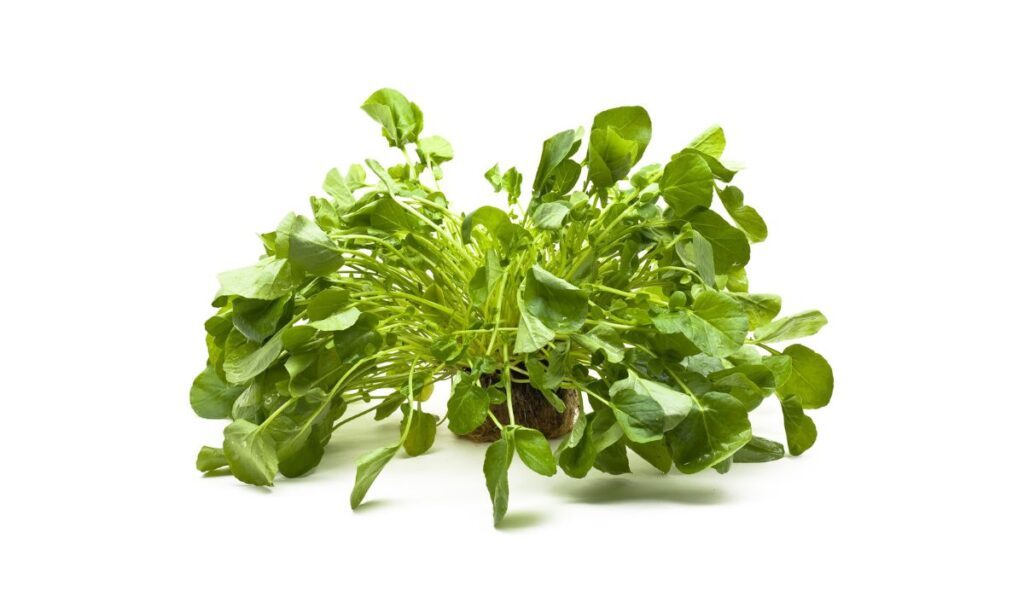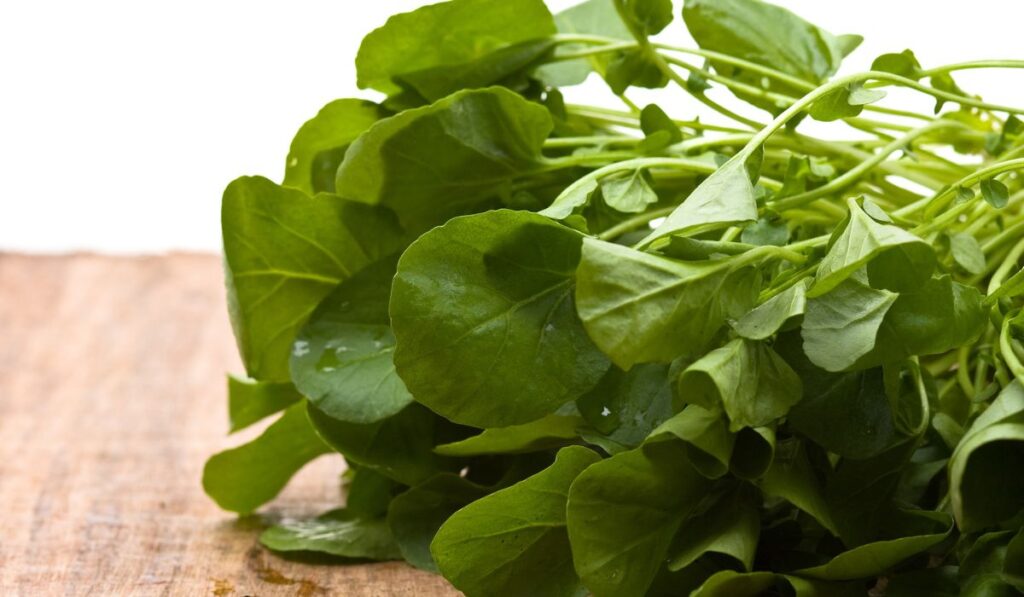Upland cress is a cool season crop native to Europe. It is easy to grow and can be harvested as sprouts, salad leaves, microgreens, or as a mature, cookable green. Its low cholesterol, fat, and sodium levels and rich nutrient profile make it a healthy addition to any diet. And it has also been used as a mild diuretic and heals wounds.
The best time to plant upland cress is in late summer or fall. Ensure the soil is moist but well-drained and that your plant is in partial or complete shade. Seeds typically take two weeks to germinate, while the plant leaves can be harvested in about seven weeks.
Upland cress grows easily from plants. It can also be propagated from stem cuttings or pieces. Now, let’s look at the best time to plant upland cress and the suitable climate for its cultivation. We’ll also talk about its planting process and if it’s prone to pests and diseases.
What is Upland Cress?

Also called early winter cress, moss-curled cress, extra-curled cress, or curly cress, upland cress is a biennial herb that grows well in moist soil. It’s dark green with leaves resembling chervil or parsley with thin, branching stems.
Similar in growing habit and taste to watercress, upland cress is much easier to grow. It’s cultivated for its sharp-tasting, edible leaves that are small and square-like. In addition, upland cress has a strong peppery flavor and is typically used in herb mixes or salads.
All parts of this plant are edible, and it’s an excellent source of calcium, iron, and vitamins. You can eat this plant raw or cook it like other greens, such as kale or spinach.
How Do You Plant Upland Cress?
It’s pretty easy to grow upland cress, but new gardeners can get the names mixed up with other cresses. That’s why it’s best to refer to this plant by Barbarea verna (its botanical name) when buying its seeds.
Upland cress needs partial shade and cool, moist soil to thrive. Belonging to the mustard family, this plant bolts quickly in hot weather. However, it’s typically grown in spring and fall and can survive mild freezes.
Remember that successful sowing plantings provide you with a continuous supply of tender young leaves. As this is a hardy plant, covering it with a cloche or something similar will ensure continual pickings during winter.
To prepare the ground for planting upland cress, remove plant detritus, clods, and weeds before raking it smooth and leveling it. Be sure to plant the seeds about ½-inch deep into the moist soil. As the seeds are tiny, plant them thickly, followed by thinning.
Keep a space of almost 12 inches between rows and plant the seeds 3 to 6 inches apart within the row. Once the seedlings are big enough, thin them to 4 inches apart. Make sure the plants are well watered, and your upland cress will be ready for harvesting within seven to eight weeks.
If your plants start to lose their deep green hue and become yellowish green, add 6 ounces of 10-10-10 for every 100 feet of row. You can also do this when your plants are dry to prevent them from burning.
How to Prevent Pests and Disease
Hardy and frost-tolerant, upland cress can grow in most climates. Luckily, upland cress doesn’t face any severe pest problems, nor is it prone to any serious disease.
However, if grown in too much heat, the flavor of the mature leaves may become very spicy, although young leaves will taste just fine.
What Climate Does Upland Cress Grow Best in?
Cool, mild weather is best for growing upland cress. This plant is frost-tolerant and should be sowed in early spring at least 4 to 6 weeks before the last frost. Upland cress prefers a pH of 6.0 to 6.8 and seed germination takes 5 to 15 days.
This plant proliferates from seeds and is ready to harvest after 15 to 20 of sowing. An important tip is to sow cress seeds every 10 days to enjoy a continuous harvest through midsummer. For a winter and autumn harvest, plant upland cress in late summer.
Harvest and Storage

Once the upland cress plant is about 4 inches high, pluck the leaves to enjoy the harvest. Leave the roots and stem intact to allow for more leaves to grow. Cutting the plants back by half an inch will allow them to regrow quickly.
You can also harvest the whole plant if you want. However, harvest before the plant blooms for the best-tasting leaves, as mature leaves can be bitter and tough. The flowers of upland cress are also edible but should be eaten as soon as they’re harvested.
Leaves of upland cress can be stored in the refrigerator for up to a week in a plastic container or bag.
Care of Upland Cress
Make sure to follow the tips given below for healthy upland cress plants:
- Keep the soil weed-free.
- Pinching the plant back helps to promote new foliage.
- Avoid growing your upland cress plant in direct sunlight.
- Sow seeds thickly, as overcrowding isn’t a problem with this plant.
- Upland cress thrives in moist, well-drained sandy loam.
- Using mulch helps to conserve soil moisture.
- When grown in winter, upland cress requires low levels of water, while in warmer seasons, it requires moderate to high levels of water.
- Adding fertilizer helps to boost growth after the possibility of frosts has passed.
